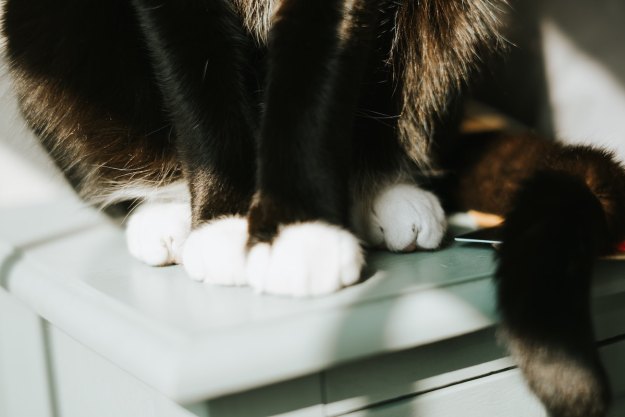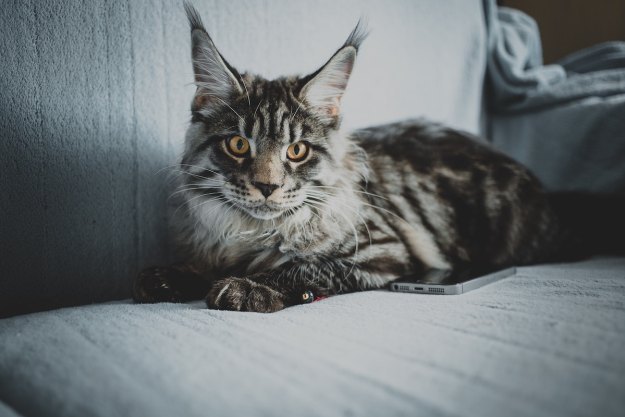You’ve probably heard all about raw diets for pets. Given that wild cats eat raw meat all the time, it seems to make sense that your domestic cat would also benefit from these meals. But feeding uncooked meats, including raw chicken, is complicated, and it carries some risks.
There are definitely benefits, but it’s also important to understand the concerns and to talk to your vet about your cat food plans so you can make the dietary choice that’s right for your animal. Can cats eat raw chicken? Yes. But whether it’s a good idea to feed cats raw chicken is really the question.
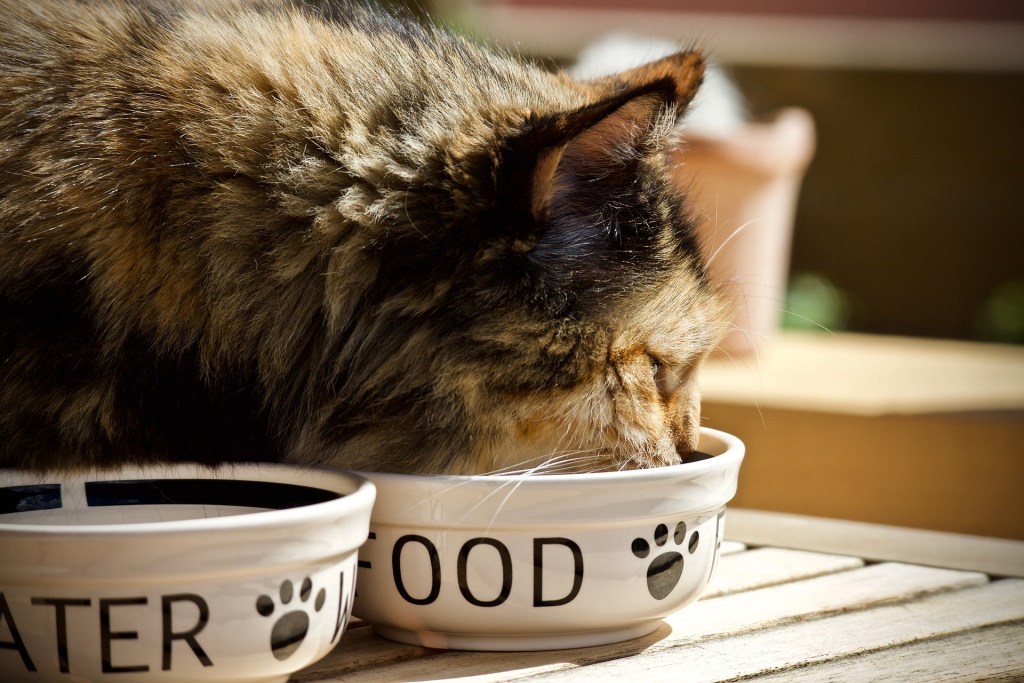
Why feeding raw is appealing
Raw chicken for cats does offer some benefits. It doesn’t have the fillers or additives that you find in many commercially available foods, and chicken is a nutritious source of protein.
Many cat owners believe that because cats are carnivores, it’s important to feed them foods that are as close to what they would have eaten in the wild as possible in the kitchen. Raw proteins, like chicken, seem to be a natural answer. But there are some risks that come with feeding cats raw foods, and with chicken in particular.
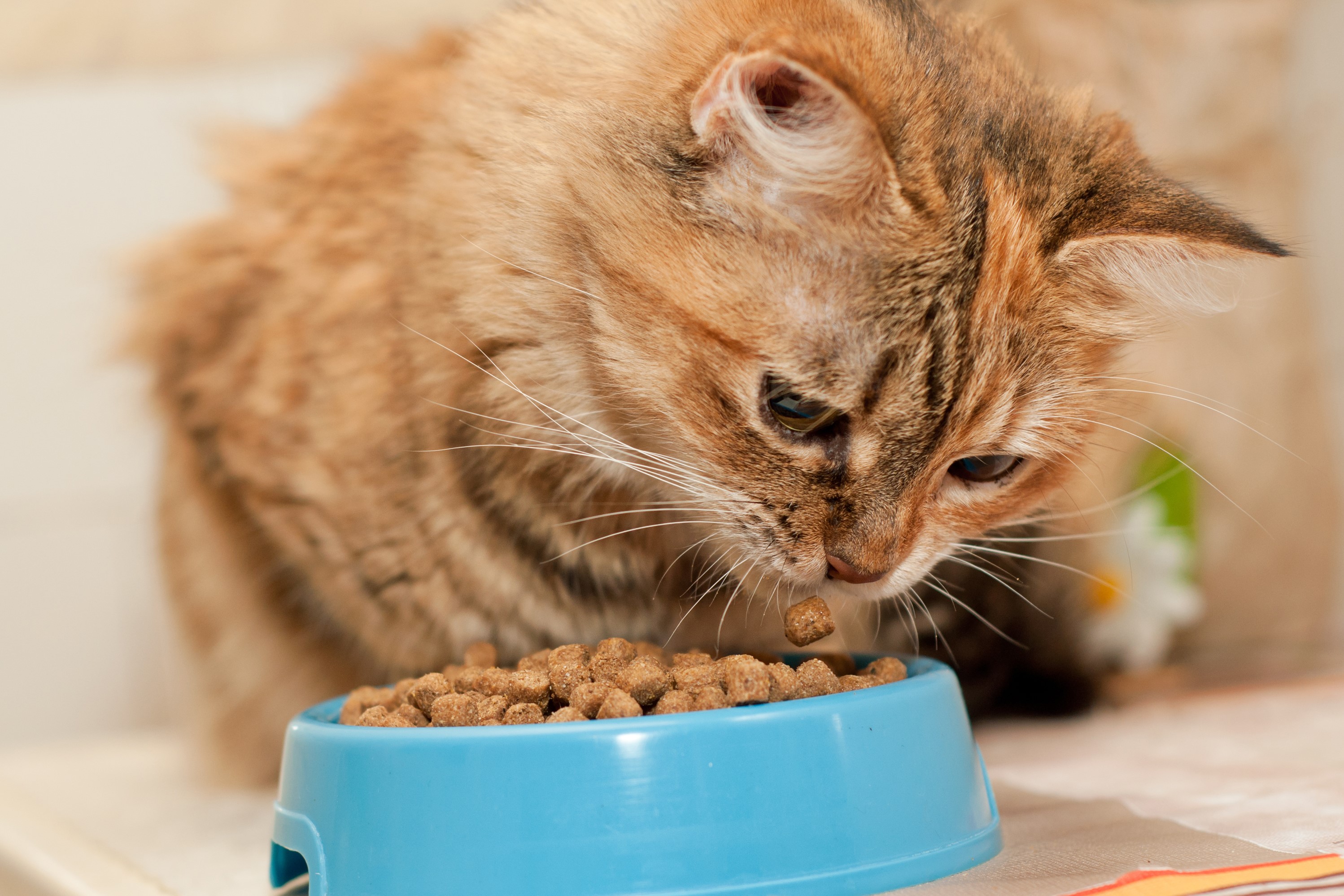
Why raw chicken can be a problem
Feeding raw chicken to cats can cause issues, particularly if the chicken isn’t fresh. Chicken can carry salmonella, which will make cats (and humans) very sick. Chicken can also harbor bacteria and potentially upset your cat’s digestive system.
It’s also possible for your cat to ingest small pieces of chicken bones as he eats. These can be problematic if they get stuck in his digestive tract.
While wild cats regularly eat raw meats, your domesticated cat is used to processed, cooked foods. Introducing raw foods can upset his stomach.
Additionally, if you’re thinking of feeding your cat a diet that consists of only raw chicken, it becomes difficult to balance your cat’s nutrition. You’ll probably need to add vitamins and minerals to the meat, and this can be a challenge. If you want to feed a raw-only diet, then a commercially available raw food for cats may be a better choice. These products are formulated to ensure that your cat’s nutritional needs are met, so you don’t have to worry about adding in vitamins and minerals.
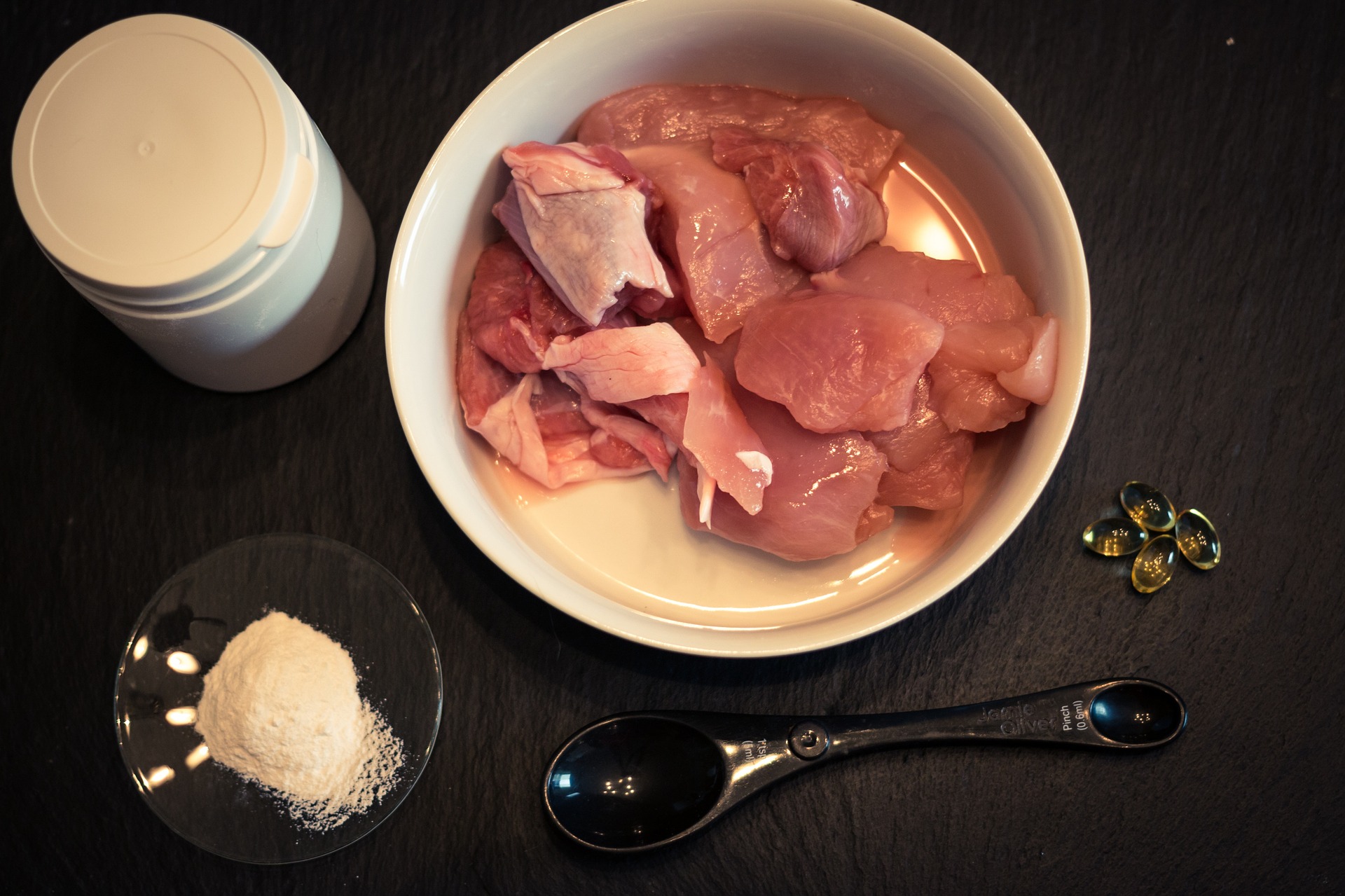
A safer way to feed raw foods
If you want to feed your cat raw chicken, then it’s important to take precautions to make it as safe as possible. When sourcing chicken for your cat, look in the organic section and buy the freshest products you see. Feed these to your cat promptly — the longer chicken ages, the more bacteria it grows.
Try to avoid any excess handling of the meat, which can also contribute to bacteria, and use good food preparation techniques. Cut the chicken on a clean, sanitary surface with a clean knife. Be sure to remove any bones before giving it to your cat.
Once you feed him the chicken, you’ll need to promptly remove any leftovers. Throw out the leavings once they reach room temperature, and feed only as much as your cat can eat in one sitting. It’s also important to thoroughly wash your cat’s bowl with hot water and soap after he’s eaten — dishwasher-safe containers work best.
While giving your cat chicken from the store might be convenient, buying a commercially prepared product that contains raw chicken for pets has advantages. These products are prepared using processes like flash freezing that help kill off bacteria. There’s also minimal prep for you to do at home, which further reduces the chance of the food containing bacteria when you give it to your cat.
Feeding your cat raw meats can be a bit of a challenge, especially if your pet is experiencing health issues or needs to lose weight. Before you make any changes to your feline’s diet, it’s always important to consult with your vet. Your kitty doctor can advise you about the foods that may be most helpful for your cat, and the vet can also identify if there are any health risks to the changes that you’re planning to make. As with any menu swap, always introduce new food gradually while also slowly decreasing the amount of old food you’re giving your cat. This slow transition can help avoid digestive upset and make the adjustment easier for him.
Editors' Recommendations
- When do kittens start eating food? Know the facts for your fur baby’s health
- This video of a confused kitty discovering a cat water fountain is adorable
- What you need to know about your cat’s swollen lip – what caused it and how to help it heal
- Everything you need to know about the munchkin cat: Some facts may surprise you
- Can cats eat blueberries? What you need to know

